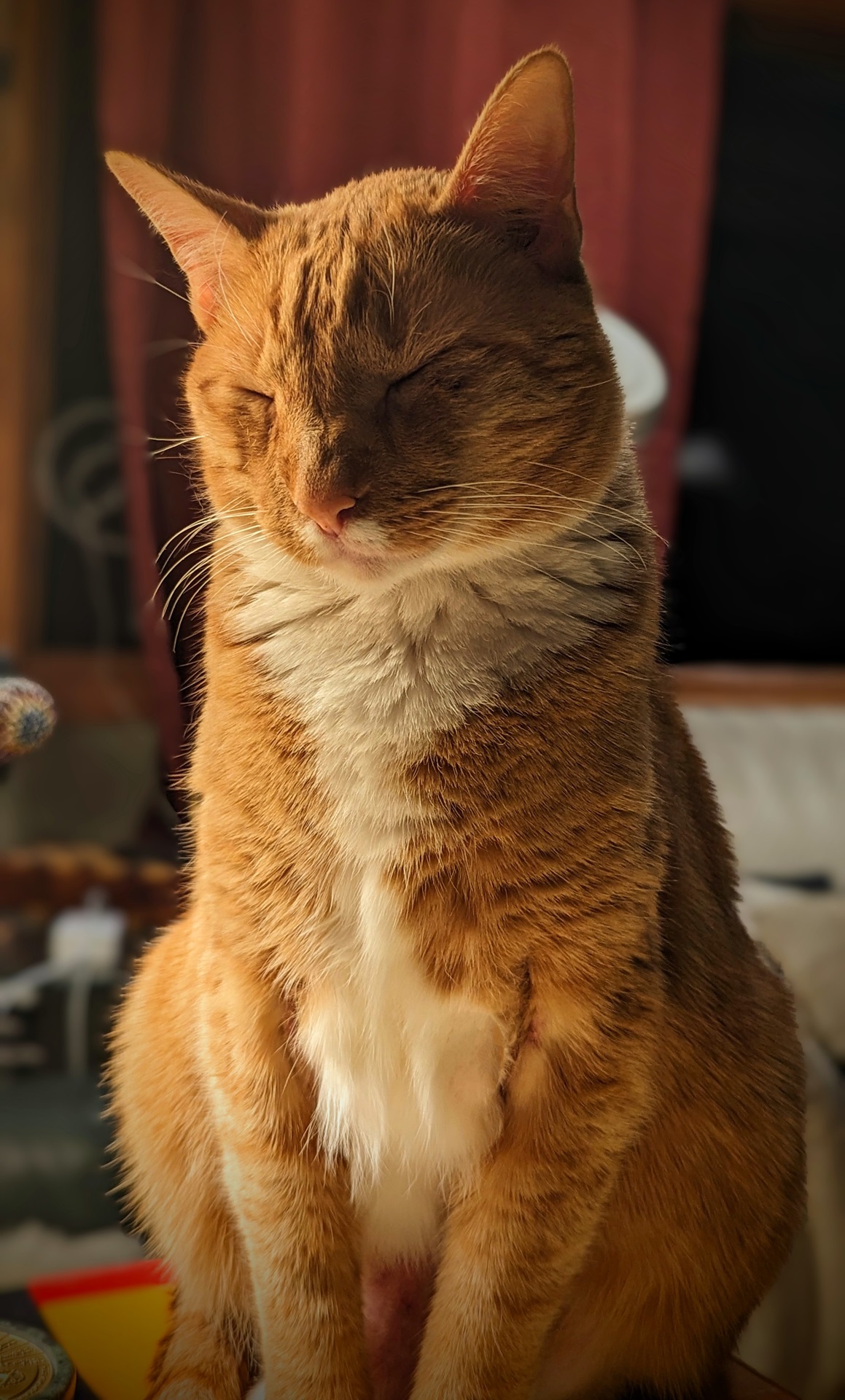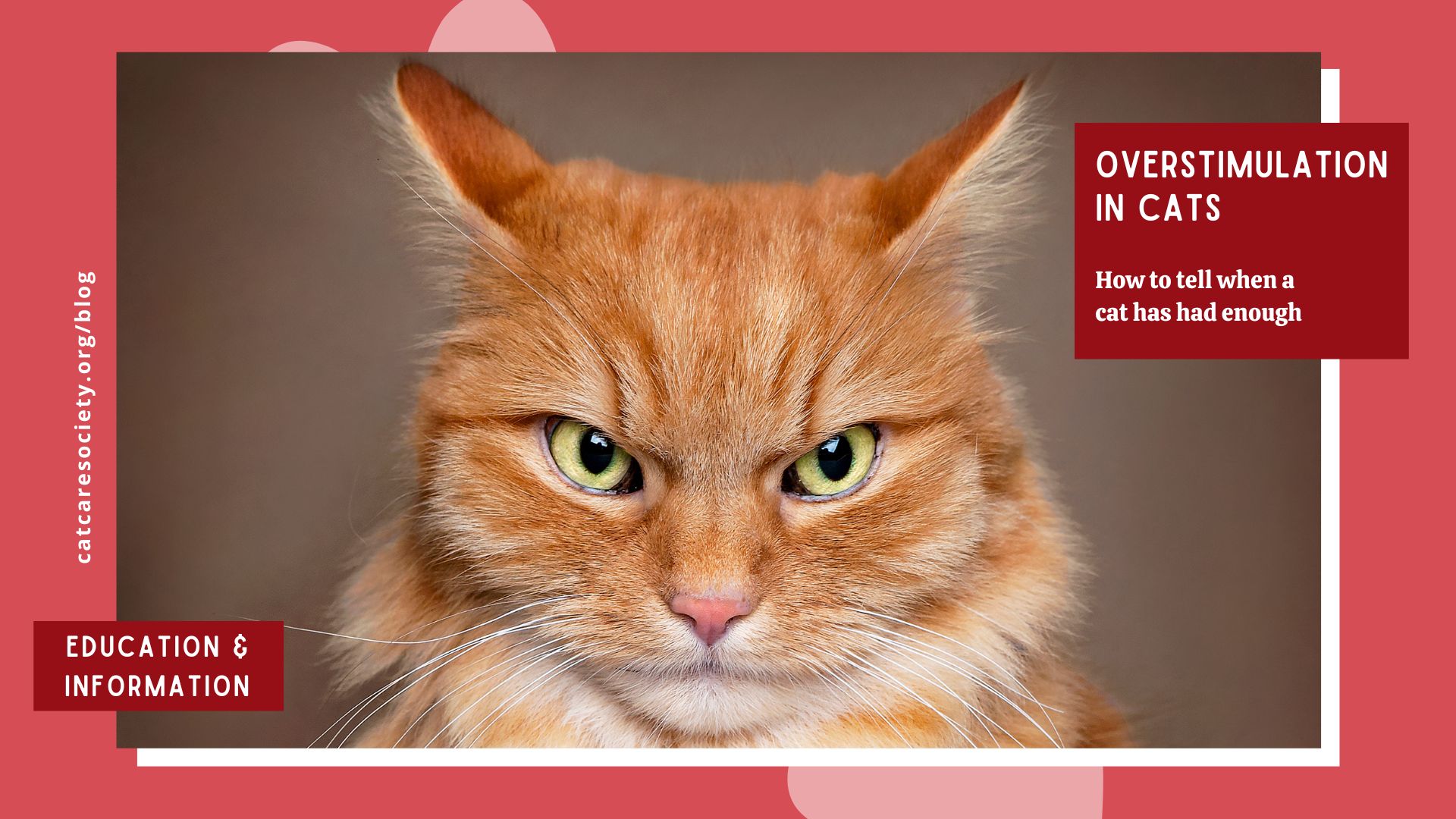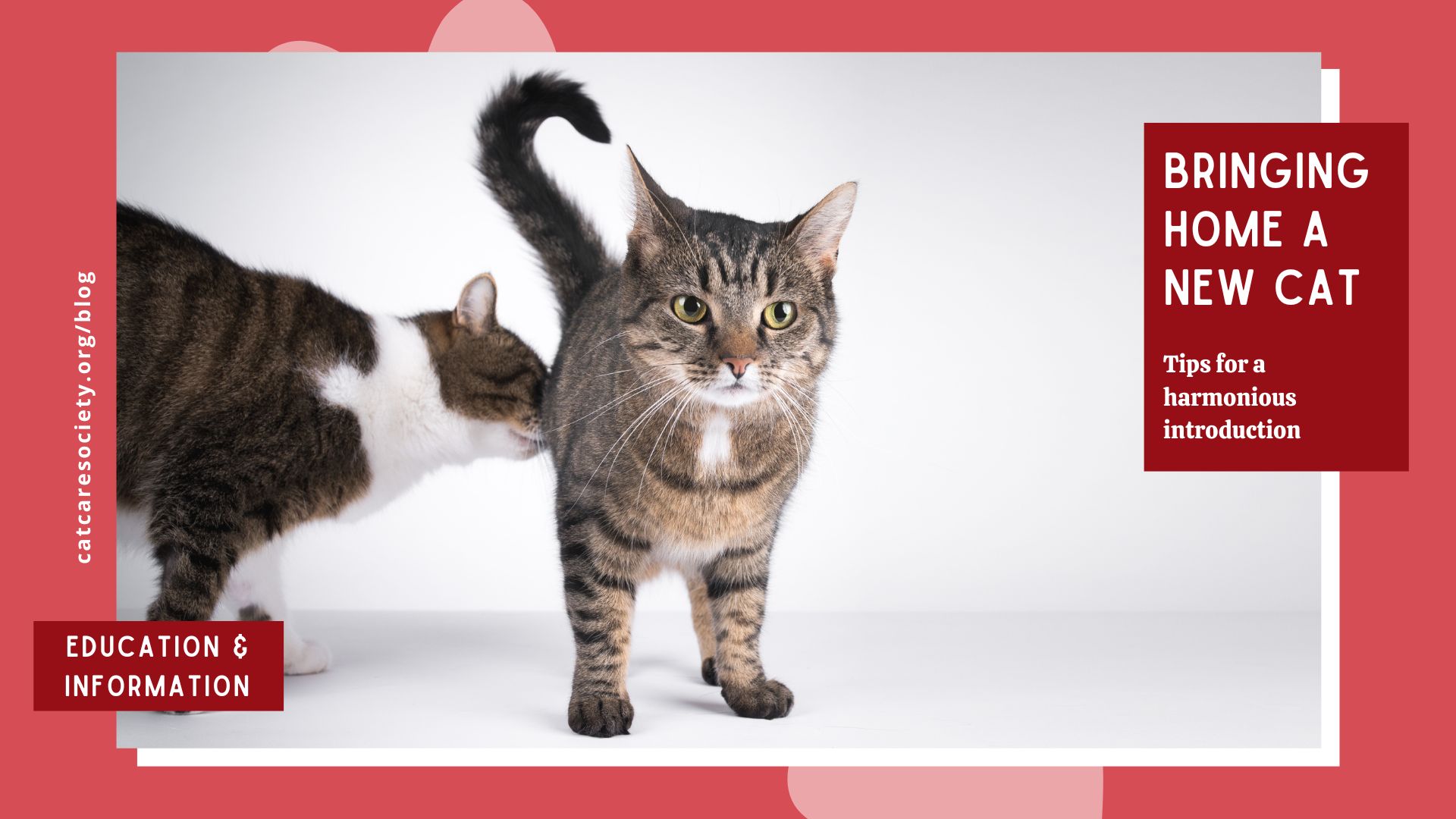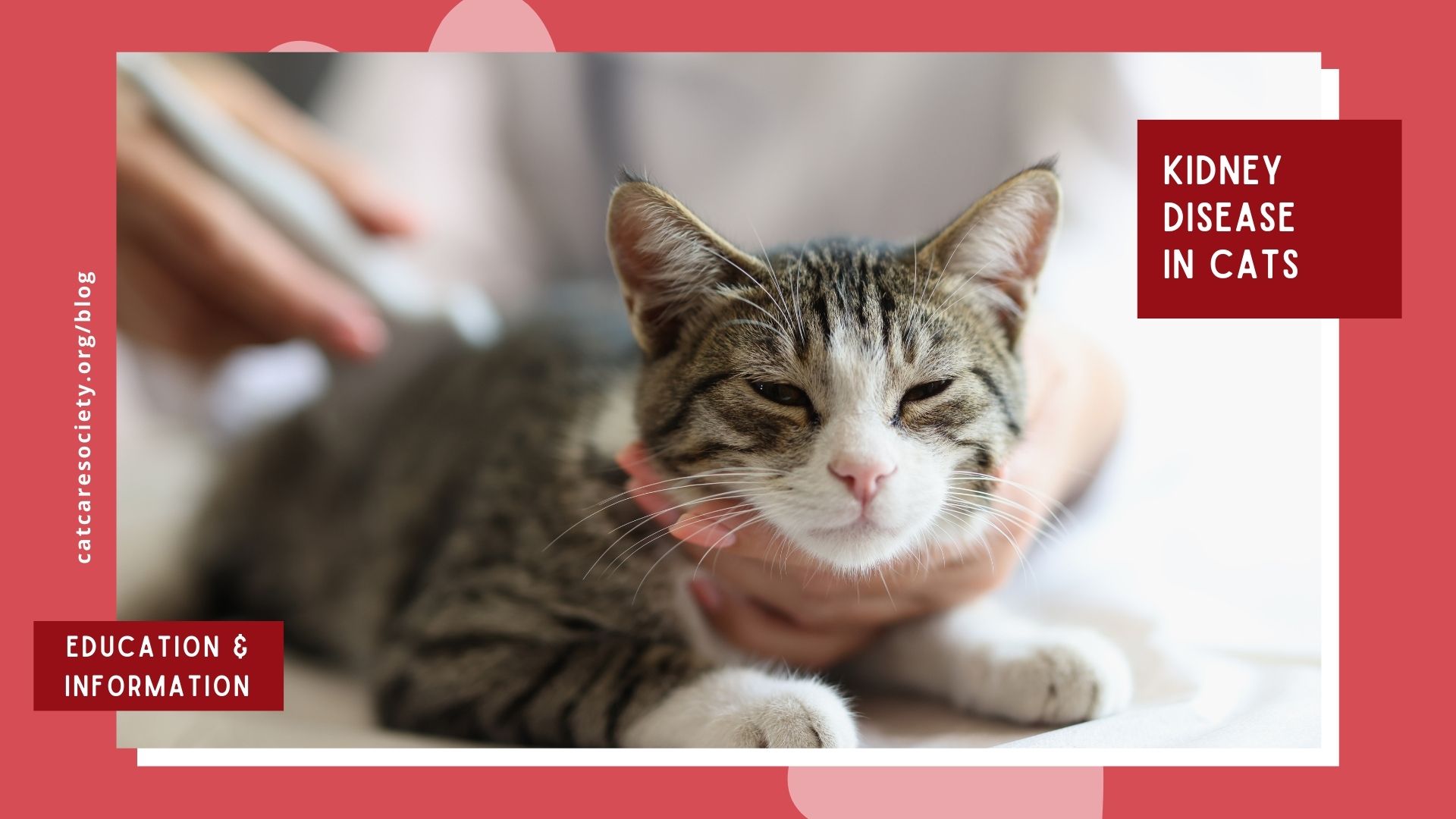Like some humans are more sensitive to certain stimuli than others, some cats too have limits for how much physical interaction they can handle at any one time. Often perceived as aggression, overstimulation is a common reaction cats have in busy shelter environments, and sometimes in their forever homes even after they’ve adjusted. But what’s behind this behavior and what can you do about it before it escalates? Let’s dive in.
Overstimulation: An Overview
Cats experiencing overstimulation often act out, resulting in a bite, scratch, hiss or attack that may seem unprovoked. However, cats often exhibit warning signs through their body language that some of us may miss. What we think is innocent petting can actually hurt your cat more than you realize.
Overstimulation (sometimes shortened to “overstim”) is when cats experience sensory overload from too much petting, caused by a painful nerve reaction, stress or built-up frustration. It has nothing to do with a cat’s temperament, but an actual physiological response to touch. Basically, their nervous system goes into overdrive and they feel significant discomfort.
Most often, cats become overstim during petting, but it can also occur during play time, when the cat is engaged with another animal or sees another animal outside.
Unfortunately, in many cases, it is the cats who solicit attention who tend to become overstimulated. If you’ve ever had a cat approach you, then gets mad when you give them attention, this was likely the case!
The good news is that you can take steps to work with these cats once you know how to manage and prevent it.
Recognize the Warning Signs
What are the signs you should watch out for, signaling a cat may be overstimulated?
- Restlessness
- Tail twitching
- Ears flicking back
- Skin rippling
- Whipping its head toward your hand during petting,
- Increased vocalization
- Dilated pupils
- Becoming “mouthy” with you
Dig Deeper: Decoding Cat Body Language
Often the first sign is subtle and quick; a small ripple or twitch in their skin. This makes being closely attuned to their physical micromovements so important. All thresholds are different, though, and no two cases are exactly the same.
Cats can also accidentally overstimulate themselves. Watch out that they’re not rubbing extensively.
What to Do with an Overstim Cat
When touching a cat who becomes overstimulated, try to focus petting on the head and chin, not down the body toward the tail — and never the belly. Pets should be brief. Watch the cat’s body language to see if there are subtle cues that he has had enough.
If the cat is signaling that its limit has been reached, it’s time to back off. Give it some time and space before attempting to touch your cat again later.
The best way to help cats with overstimulation is by providing daily enrichment, scheduled play/hunt sessions, and even trying to clicker train your cat.
Hoagie’s Story

A few years ago, a gorgeous orange cat named Hoagie was surrendered to Cat Care Society due to his aggression in the home. Even around experienced shelter staff, Hoagie would lunge when we tried to examine or move him around. He was notoriously hard to handle and eventually bit someone. Eventually, he began to show slow signs of progress with some patience in the shelter and in a foster home. We made sure to explain to potential adopters that they would need to learn his signs of frustration and listen to his forms of communication.
That right owner came along and wasn’t scared of taking his time to make it work with Hoagie.
We were delighted when Jeffrey shared this update: “Here he is. Just over a year later, he is the sweetest lap cat ever and he just is so sweet and gentle. My girlfriend has a 10- and 12-year-old, and he absolutely loves them. Loves to sleep with them and lays on their laps as well.
“I’m glad I saw him isolated in his little room and decided to adopt him. You can see from his expression that he is home, and there is no fear. He never growls anymore, and just follows people around and head butts us when we go to pet him.”
The CCS Approach
Shelters take in many cats who were brought in by their owners for various reasons, one of those being aggressive behavior in the home (spoiler: most often, it was an overstim cat who was not truly aggressive).
When those cats make it here, we work to learn their unique social cues and make notes in their profiles in our database so that other staff knows how to handle them. This also lets us share important information with their adopter!
Sometimes, a cat’s overstimulation is not actually caused by painful touch, but rather is based in his or her behavior. In those cases, a more escalated behavior and enrichment plan is enacted. Other times, it could be something like underlying arthritis or another medical condition, making it not-so-straightforward to diagnose.
“We’re still learning how behavioral and nerve issues are connected,” said Cat Care Society’s lead veterinarian, Dr. Cecily Palamara. “It’s similar in people with a hypersensitivity to a pain response. The nerves are overreactive. It happens a lot in women, and cats with anxiety.”
For overstimulated cats in the shelter, we schedule a play/hunt session with them 2-3 times a day, one on one. They get plenty of surfaces to be scratched and hunting and searching enrichment toys. And if that particular cat’s needs don’t align with the colony room they’re in, we move them to a more conducive environment to support them.
Once a cat with a history of overstimulation goes home, that adopter receives the following disclaimer:
“This cat has shown overstimulation behaviors either in their previous home or while in the shelter. This means the cat became overstimulated by either their environment or handling, usually displayed but hissing, growling, swatting, nipping or biting when handling. Overstimulation is a normal response and can vary widely between cats. This cat will require a patient owner willing to observe and respect your new cat’s communication and boundaries. We recommend an owner willing to provide consistent positive reinforcement training and no small children due risk of cat biting/scratching during petting/play.”
Now, when you see “overstim release” listed on select cats’ bios on our website, you know what it means!
Other Resources
- Dumb Friends League: Overstimulated Cats
- Jackson Galaxy: Aggression in Cats (see: Petting-Related Aggression section)
- 24Pet: Why cats bite and how to stop it





